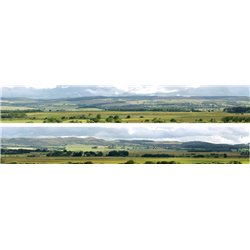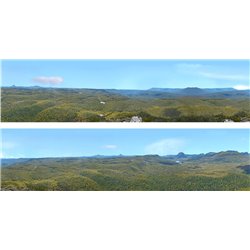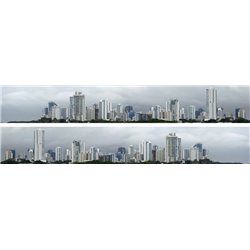When it comes to assembling a kit with wooden parts, there are a few different adhesives that can be used depending...
No products
Product successfully added to your shopping cart
There are 0 items in your cart. There is 1 item in your cart.
Search Tips
Christmas and New Year
We are dispatching orders every weekday apart from Christmas Day, Boxing Day and New Year's Day.
If you order is time critical, select next day delivery at checkout.
The shop in Sandown is closed from 25th December, reopening on 30th December.
How do I best blend buildings, roads and other scene elements into a backscene whilst maintaining a realistic perspective?
How best to blend buildings, roads, and other scene elements into a backscene while maintaining a realistic perspective on a model railway can be an interesting dilemma for many modellers. The following options may be useful to consider:
Choose a suitable backscene: The first step is to select a backscene that is appropriate for the particular theme and scale of the layout in question. The backscene should be a suitable size and include elements that are in keeping with the era and location of the layout.
Photo or Painted : Photo backscenes can be very specific in nature and as such may create problems with integration into the layout which inevitably leads to issues relating to perspective. Painted backscenes are more random and simplistic in nature and as such may be easier to integrate into a layout's perspective.
Order of planning: If a modeller has decided to use a backscene then it is a very good idea to identify the individual backscene early in the planning process. The reason for this is that the backscene may have elements that flow into the foreground such as roads or rivers, the locations of which will have to be considered when deciding the exact configuration of the layout's particular scene elements.
Consider the perspective: When blending buildings, roads and other elements into a backscene, it is important to maintain a realistic perspective. The elements in the foreground should be larger and more detailed than those in the background, this helps to create the illusion of distance and depth.
Create a seamless transition: To blend elements into the backscene, it is useful to create a seamless transition between the foreground and the backscene. This can be achieved by painting a sky gradient or using a backscene that features a natural landscape such as hills or trees that transition into the foreground elements.
Use forced perspective: Forced perspective is a technique that can be used to create the illusion of depth and distance. This involves making buildings or other elements smaller in size as they move towards the back of the scene. For example, smaller versions of the layout's buildings can be placed further away in the backscene thus creating the appropriate perspective.
Add lighting: The use of lighting can help to blend elements into the backscene and create a more realistic scene. A modeller can use lighting to highlight certain areas of the scene and create the illusion of depth and distance.
Overall, blending buildings, roads and other scene elements into a backscene while maintaining a realistic perspective requires careful planning and attention to detail. By considering the perspective, creating a seamless transition, using forced perspective and adding lighting a modeller can create a visually stunning scene with a realistic perspective on their layout.
Click here to receive the tips weekly in your mailbox. You can unsubscribe at any time.










